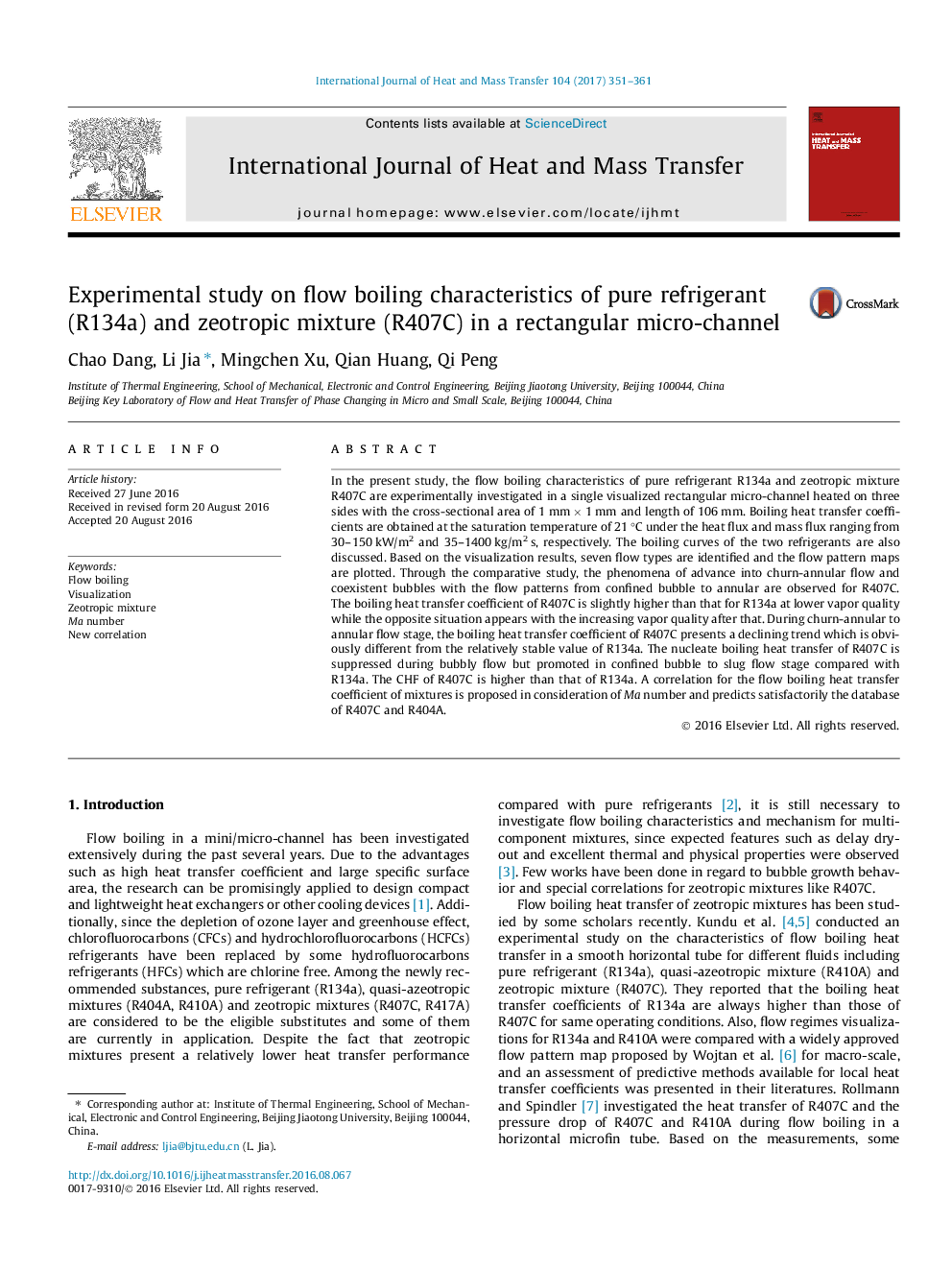| Article ID | Journal | Published Year | Pages | File Type |
|---|---|---|---|---|
| 7054893 | International Journal of Heat and Mass Transfer | 2017 | 11 Pages |
Abstract
In the present study, the flow boiling characteristics of pure refrigerant R134a and zeotropic mixture R407C are experimentally investigated in a single visualized rectangular micro-channel heated on three sides with the cross-sectional area of 1 mm Ã 1 mm and length of 106 mm. Boiling heat transfer coefficients are obtained at the saturation temperature of 21 °C under the heat flux and mass flux ranging from 30-150 kW/m2 and 35-1400 kg/m2 s, respectively. The boiling curves of the two refrigerants are also discussed. Based on the visualization results, seven flow types are identified and the flow pattern maps are plotted. Through the comparative study, the phenomena of advance into churn-annular flow and coexistent bubbles with the flow patterns from confined bubble to annular are observed for R407C. The boiling heat transfer coefficient of R407C is slightly higher than that for R134a at lower vapor quality while the opposite situation appears with the increasing vapor quality after that. During churn-annular to annular flow stage, the boiling heat transfer coefficient of R407C presents a declining trend which is obviously different from the relatively stable value of R134a. The nucleate boiling heat transfer of R407C is suppressed during bubbly flow but promoted in confined bubble to slug flow stage compared with R134a. The CHF of R407C is higher than that of R134a. A correlation for the flow boiling heat transfer coefficient of mixtures is proposed in consideration of Ma number and predicts satisfactorily the database of R407C and R404A.
Related Topics
Physical Sciences and Engineering
Chemical Engineering
Fluid Flow and Transfer Processes
Authors
Chao Dang, Li Jia, Mingchen Xu, Qian Huang, Qi Peng,
